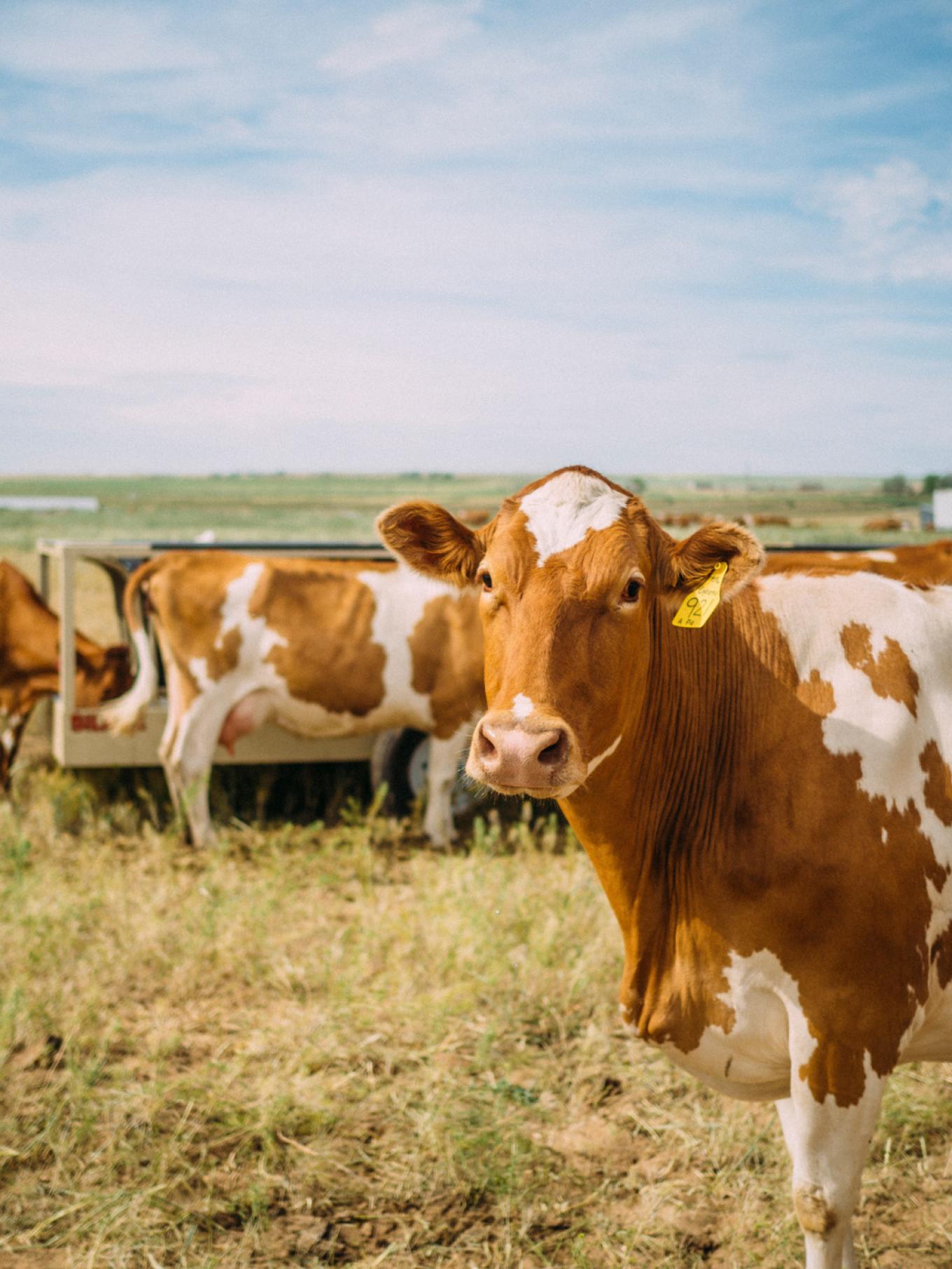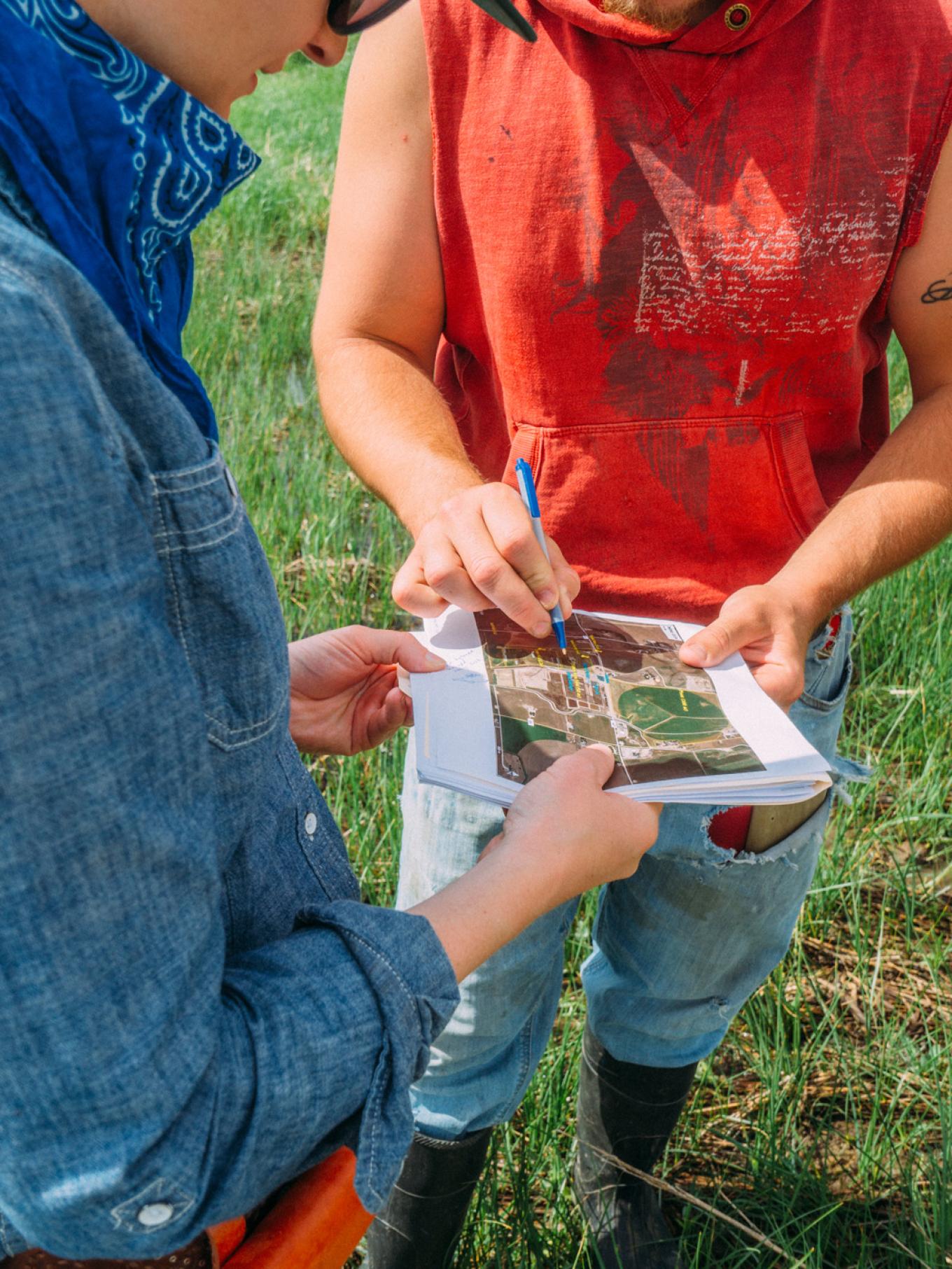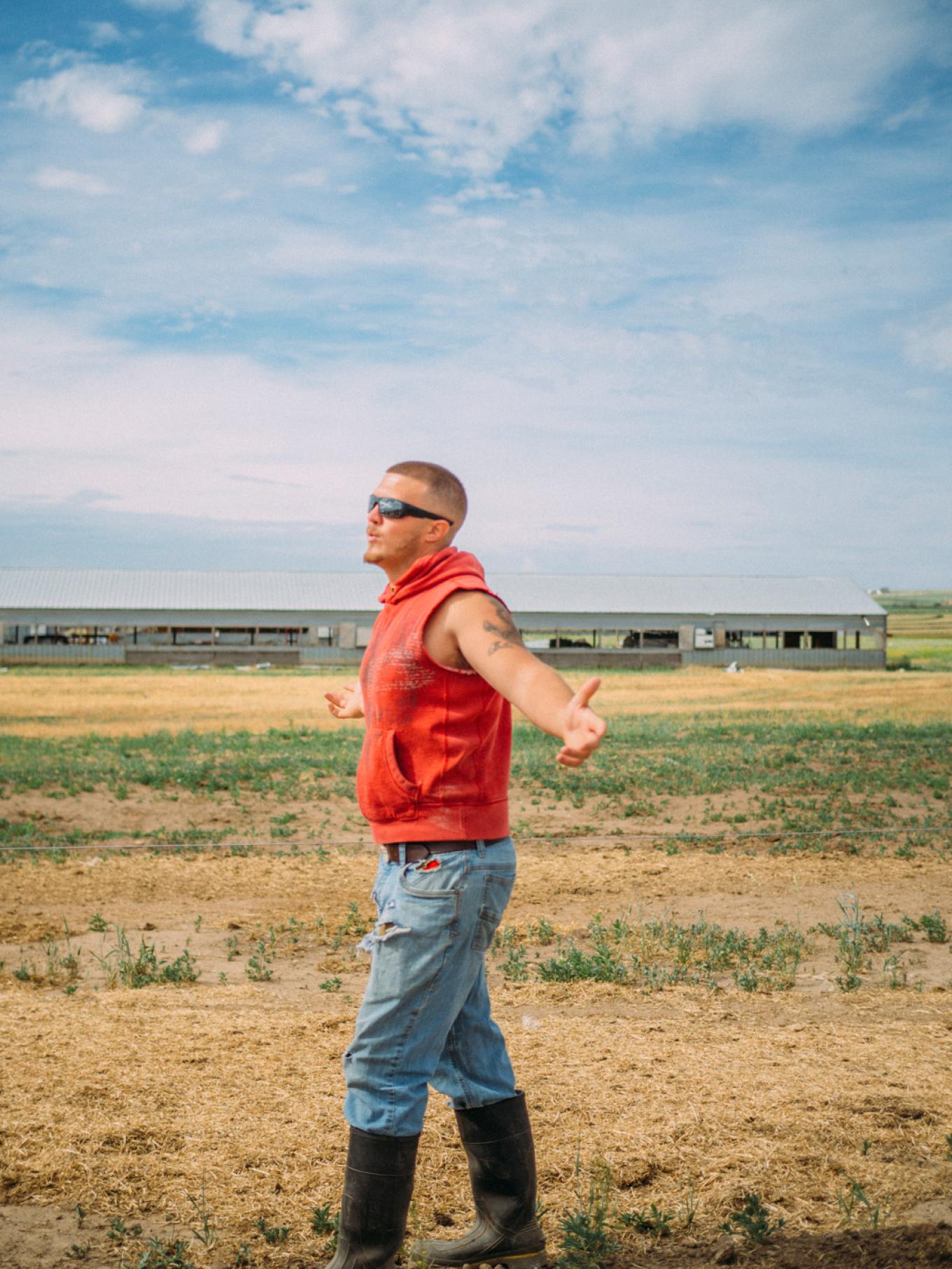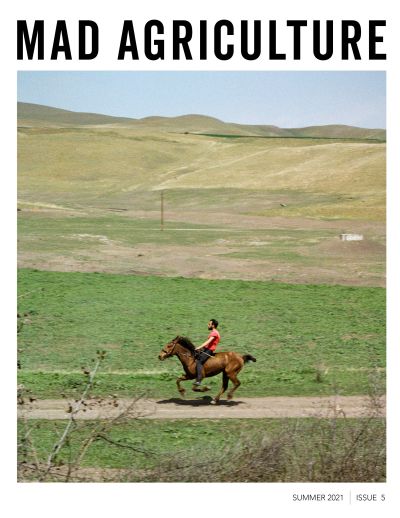
The Mad Agriculture Journal
Degroot Dairy
Published on
June 08, 2021
Written by
Emily Payne
Photos by
Jane Cavagnero
A leap of faith towards a better way of raising cattle
Lee esto en español.
When Terry deGroot returned to Kersey, Colorado, in 2017 after serving in the U.S. Navy, the family dairy farm was going broke.
Terry’s father, William, was milking around 1,100 Holstein cows for a conventional dairy buyer at the time. The farm had generated a profit just 3 of the last 10 years. William knew that they couldn’t continue with current operations.
“We didn’t like how we were doing it, anyway,” Terry says. “When a farmer goes and looks at their animals, they want to see that they’re happy and healthy. Our animals weren’t. We could just see it in their eyes.”
William had refused to use hormones for his first eight years of raising cattle. Giving an animal a hormone is forcing them to do something that their body doesn’t want to do, he says. But in the conventional dairy business, it’s efficiency over everything. A consultant told William the blunt truth: it didn’t matter how he wanted to operate, he would have to use hormones to produce more milk and keep up with competition, or the farm would go out of business.
By 2019, the deGroots had nothing to lose. William and Terry had grown interested in an endangered breed of heritage cattle called Guernsey, which is known to produce richer, creamier, and better-quality milk than the conventional Holstein. They purchased a couple of Guernsey calves to experiment with another way of dairy farming.
Today, the family—Terry, William, Julia, and Tabitha—raises just 80 Guernsey cattle that graze 100 acres on their regenerative dairy farm, Colorado Cow. Their milk is sold in Natural Grocers and Whole Foods stores across the front range and produced into an artisan cheese through Longmont-based Haystack Mountain Creamery.

“We turned into farmers again,” Terry says. But when the deGroots sold off their entire Holstein herd just more than a year ago, the family was taking a leap of faith towards a better way of farming—and they had no idea how to begin.
America farms more than 8 million Holstein cattle and fewer than 2,500 Guernsey cattle. While the U.S. Guernsey population has always been small, its numbers have steadily declined since the U.S. Department of Agriculture (USDA) tallied 44,000 Guernsey cattle in 1930. Dairy prices favor the volume of milk produced, so the industry has come to rely on high-output Holsteins, which have been bred for mass production for decades now.
Guernsey is a quality, not quantity breed, Terry explains. According to the USDA, the average dairy cow in the U.S. produced more than 23,000 pounds of milk in 2019, while a Guernsey cow typically produces between 14,000 and 16,000 pounds per year. Terry remembers finding at their first milking that the Guernsey milk didn’t even fill their system’s lines to reach the tank.
Guernsey cattle are strong yet more sensitive, fragile, and difficult to manage than Holsteins. “They’re like big babies,” Terry says, laughing. He initially tried to integrate their new Guernsey calves into the Holstein herd, quickly realizing that this breed wouldn’t fare well in an industrial setting. Guernsey cattle thrive in a grazing system, but “grazing animals on a dairy farm is unheard of,” Terry explains.
Shortly after starting on this journey, the deGroots made a well-timed connection: a Cleveland, Ohio-based company called Origin Dairy happened to be working to create the first Guernsey dairy in Colorado.
Origin Founders Adrian and Lauren Bota hope to lead a shift from industrialized to regenerative, organic, and localized dairy systems—what they call “clean dairy”—by bringing Guernsey milk to grocery shelves. For them, this means working with small farms like Colorado Cow looking to downsize their operation for healthier land, happier cattle, and better-quality milk.
Guernsey milk is notably higher in fat, protein, and nutrients like calcium, vitamin A, and vitamin D than conventional Holstein milk, and its high beta-carotene content gives it a distinct golden tint. But its claim to fame in recent years goes beyond superior nutrition and flavor: many say Guernsey milk is easier to digest.
The key difference is in beta-casein, one of the main types of protein found in milk. The average grocery store milk contains both A1 and A2 beta-casein. Historians say that A2 was the original variety—contrary to its name—and A1 began appearing somewhere around 8,000 years ago. Over years of breeding for mass production, Holsteins have become higher in A1 protein, while Guernsey have retained mostly A2. According to Origin, this means A2 milk is more similar to what humans drank before intensive dairy farming began.
Origin knew how to bring the Guernsey milk to market, but the deGroots were rebuilding their business from the ground up. The transition from conventional management to the intensive grazing system necessary for the Guernsey cattle is complex—and for dairy farmers running on thin margins, risky. This is where Mad Agriculture came in with boots on the ground.
“We were terrified at first,” Terry remembers, laughing: “We thought, will the cow come back if we let her out to graze?”

Terry had been manager over the larger dairy team for so long that he barely knew how to milk a cow, he says. With the support of a Conservation Innovation Grant from the State of Colorado, Mad Agriculture brought in Willie Reid, an expert grazing affiliate and soil educator. Willie has practiced bio-dynamic agriculture and holistically managed dairy cows for many years—a sharp departure from the industrial management of the deGroots’ region. He showed Terry the basics of stewarding the land with dairy farming, rather than degrading it.
“They treat the soil the way we treat our animals,” Terry says. “It’s much more complex than we had realized.”
The team first showed Terry corners of his farm where soil health damage was stark: the ground was green where it had been left alone, and yellow where they were disking each year. With a two-day crash course, Terry learned about methods like no-till and restorative cover crop mixes to build soil health and re-perennialize the pastures. He practiced building a fence for a paddock system, which rotationally grazes the cattle to allow soil to regenerate, sequestering carbon and giving rise to more nutritious grass for the cattle.
The land showed signs of change almost immediately. Terry remembers putting cattle out on the pasture one morning, shortly after they stopped disking their soil, and noticing the sound of crickets. “I couldn’t remember ever hearing crickets before,” he shares. “We see soil health through the animals coming back—the bunnies, the bugs—those are things we look for now.”
The complex transition to holistic management was only part of the challenge, though: The deGroots still weren’t certain that they would be able to sell their new product.
“When day one came and we bottled the milk, we were terrified,” Terry says. The family had sold off their entire herd of Holstein cattle and were working with just 14 Guernsey at the time.
These first Guernsey milk bottles were sold at 40 Natural Grocers stores through Origin’s partnership, but it wasn’t until the second and third orders came in that Terry knew they were onto something: “That meant somebody had bought it, and they were going to buy it again.”
Now, the deGroots are focused on finding the ideal balance—a profitable operation that’s boosting soil health while producing healthy milk from happy cows. “We’re always keeping our ear to the ground, we have to continually evolve,” Terry says.
In the meantime, no longer milking at all hours means he’s sleeping at night. He spends more time with both his animals and his children—a three-year-old, four-year-old, and baby on the way.
“When we were milking 1,000 cows, we were making milk that no one wanted,” he says. Now, not only are customers seeking out Colorado Cow’s milk for its flavor and nutrition, his animals are happier.
“You let an animal out on pasture, and they jump, kick, and go crazy,” Terry says. “That’s one of the best parts. We let the cows out and get to watch them act like actual cows.”

